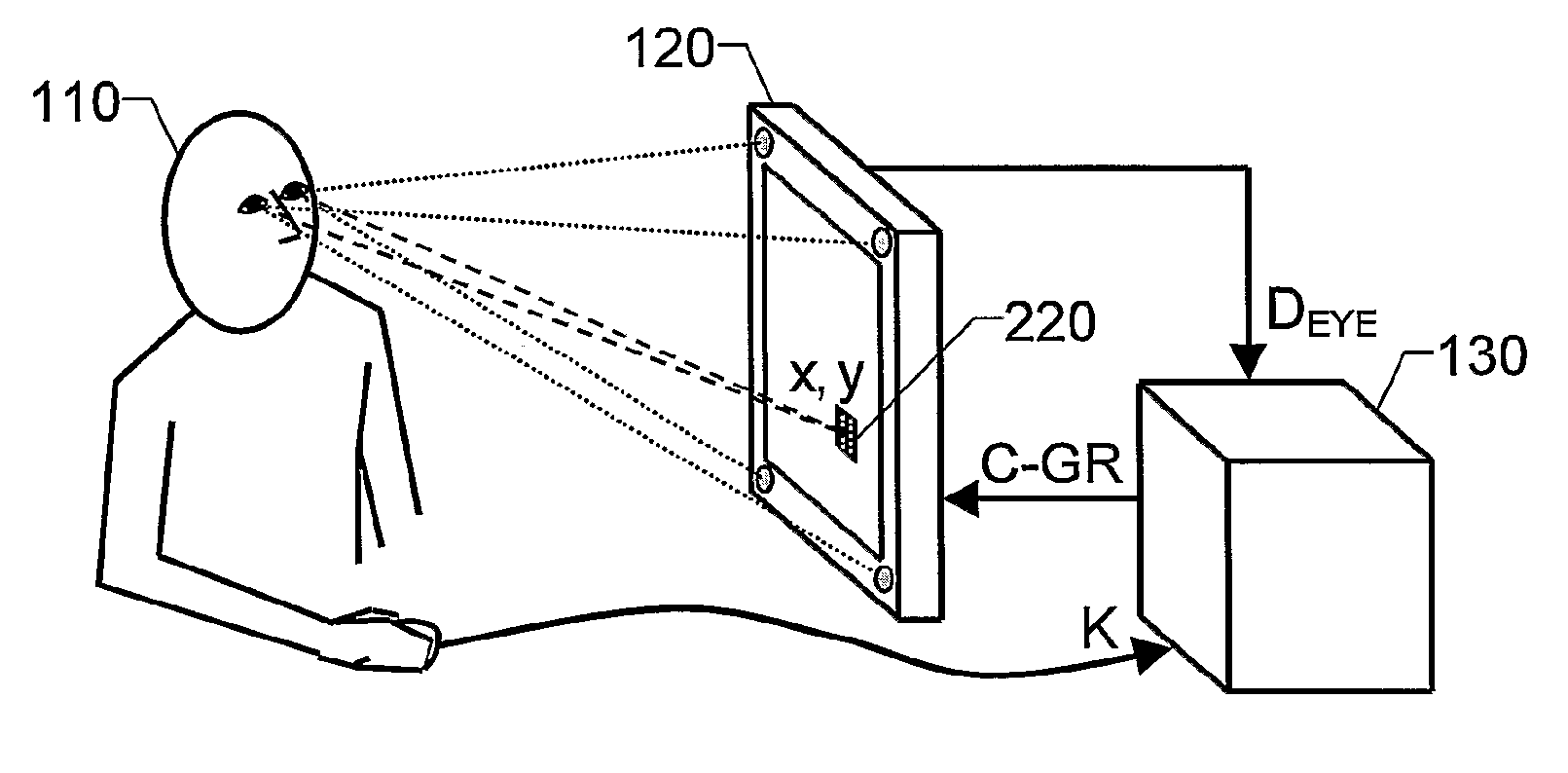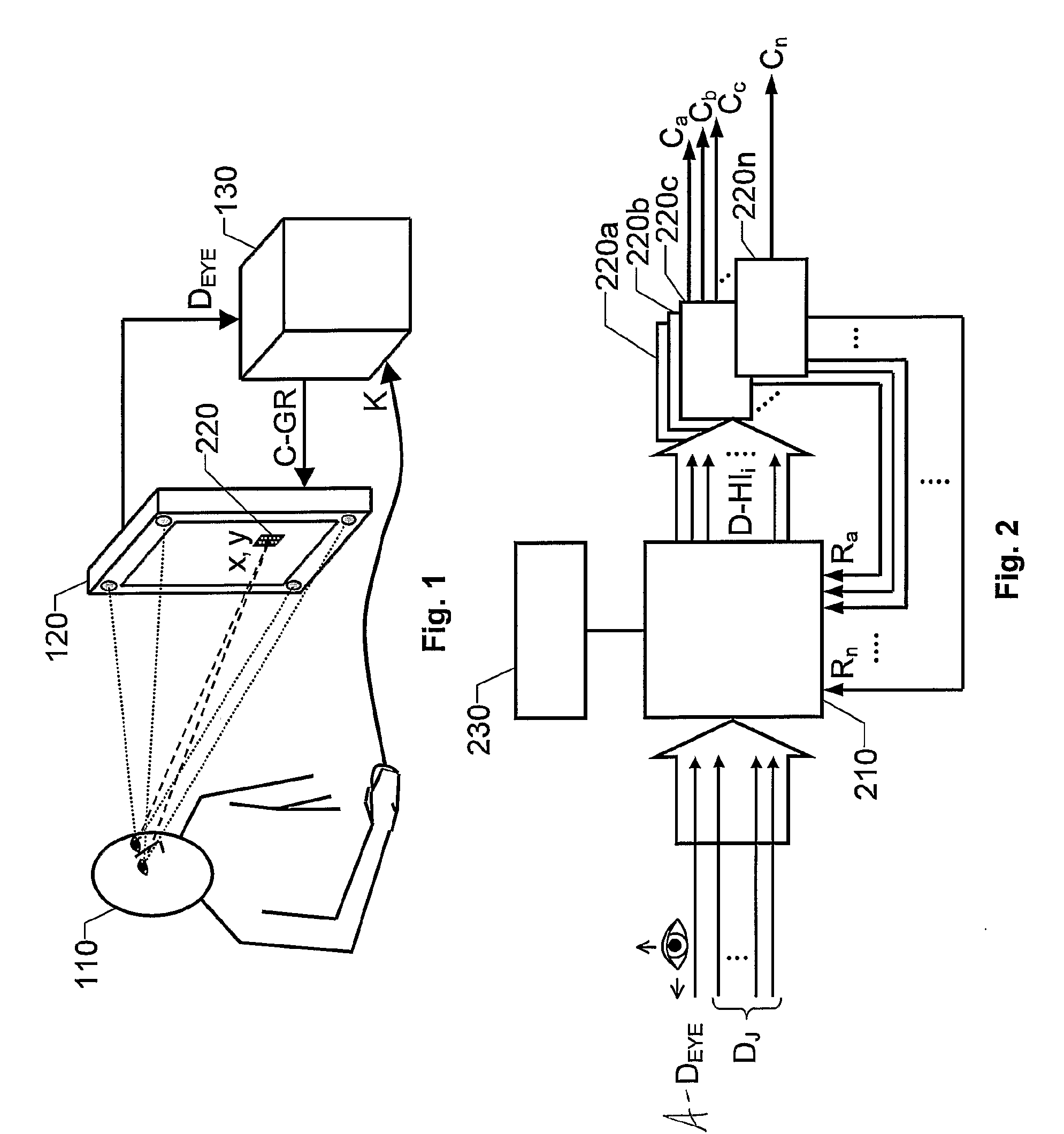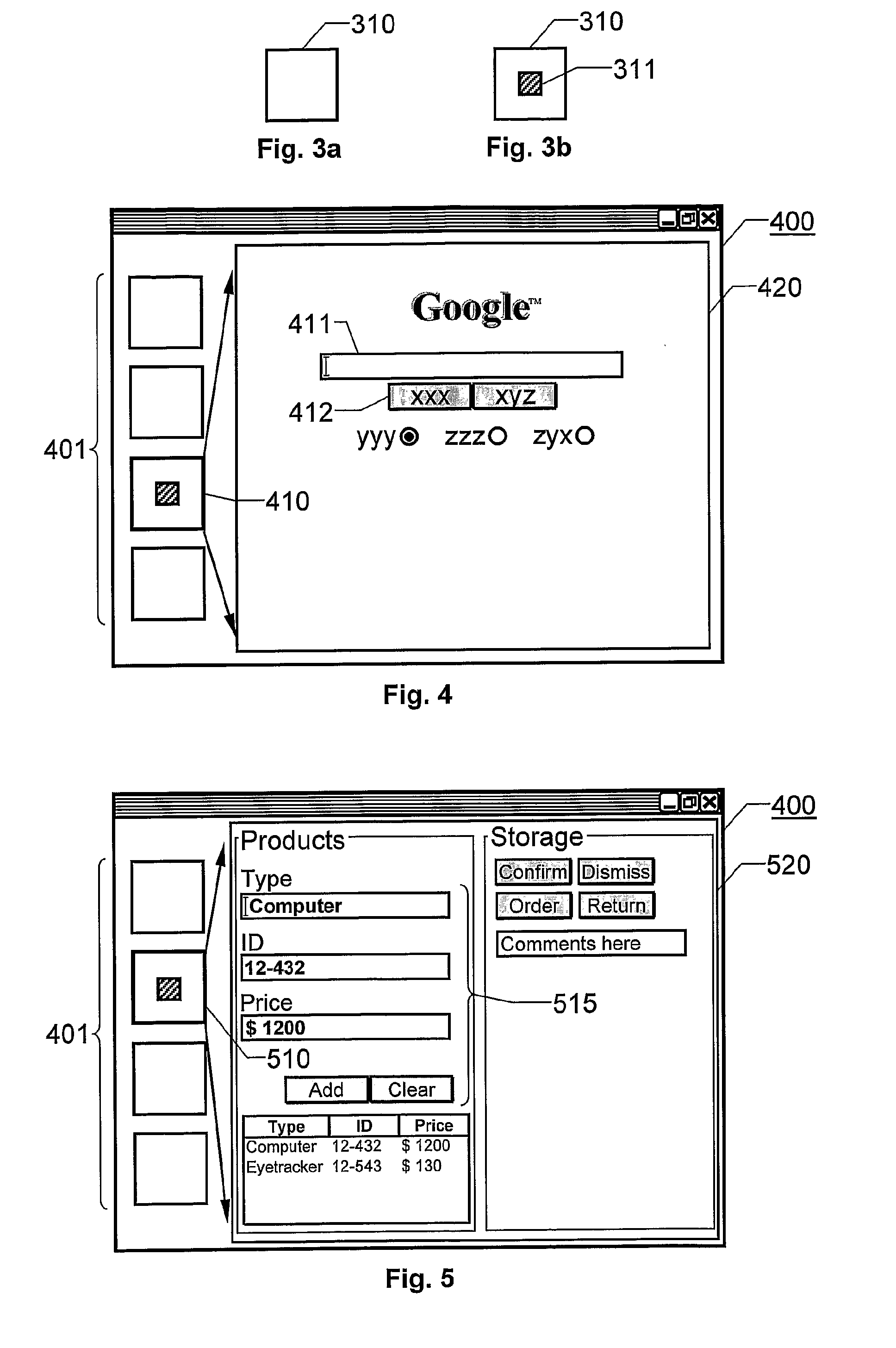Arrangement, method and computer program for controlling a computer apparatus based on eye-tracking
a computer and eye-tracking technology, applied in the field of computer-based eye-tracking systems, can solve the problems of device miss the mark in one or several respects, the input ditto has been substantially unchanged, and the communication band-width of the human computer interaction is severe, so as to achieve the effect of minimal amount of double processing and efficient man-machin
- Summary
- Abstract
- Description
- Claims
- Application Information
AI Technical Summary
Benefits of technology
Problems solved by technology
Method used
Image
Examples
first embodiment
[0055]FIG. 4 illustrates a first embodiment according to the invention, where a proposed multiview toolbar 401 is used to control applications in a frame 400. The multiview toolbar 401 here includes four different eye-buttons, which each may contain a thumbnail image (not shown) of a respective application with which the button is associated. A first button 410 is associated with a first application, e.g. an Internet browser, which preferably accesses a predefined URL or web page. The first application has a user interface which here is represented by a sub-frame 420 within the frame 400. Hence, by viewing the first button 410, the user may open the sub-frame 420. Either this activation is accomplished after a particular gaze dwell time in respect of the button 410, or in response to an activation signal, for example a keystroke or a control word. Then, a search may be executed by viewing a text input box 411, entering relevant search terms, and thereafter manipulating a search butt...
second embodiment
[0056]FIG. 5 illustrates a second embodiment according to the invention based on the proposed multiview toolbar 401. Here, a second button 510 is associated with a second application, e.g. a product management system, which has a user interface in the form of a sub-frame 520 within the frame 400. This means that a user may activate the second application by viewing the second button 510 during a particular gaze dwell time, or generating a separate activation signal (as mentioned above). Preferably, a default set of text input boxes and buttons 515 are activated initially. Then, by viewing other areas within the sub-frame 520, alternative fields and functions may be activated and manipulated.
third embodiment
[0057] Particularly, a screen control may be adapted to expand upon a manipulation based on a user's ocular activity. FIGS. 6a and 6b illustrate this as a third embodiment according to the invention.
[0058] Here, a text field 620 in the sub-frame 520 occupies a relatively small area on the display as long as the eye-tracking data signal indicates that the user's point of regard lies outside this field 620. However if, according to the eye-tracking data signal, the point of regard reaches a particular dwell time within the display area represented by the text field 620, this field expands, for instance as shown in the FIG. 6b. Hence, more information than what was initially visible in the field 620 may be shown. The thus expanded text field 620 may even cover graphical objects which otherwise are shown in the frame 400. This is advantageous, because thereby the information may be presented on-demand, so that the frame 400 and the sub-frame 520 contain more data than what actually can ...
PUM
 Login to View More
Login to View More Abstract
Description
Claims
Application Information
 Login to View More
Login to View More - R&D
- Intellectual Property
- Life Sciences
- Materials
- Tech Scout
- Unparalleled Data Quality
- Higher Quality Content
- 60% Fewer Hallucinations
Browse by: Latest US Patents, China's latest patents, Technical Efficacy Thesaurus, Application Domain, Technology Topic, Popular Technical Reports.
© 2025 PatSnap. All rights reserved.Legal|Privacy policy|Modern Slavery Act Transparency Statement|Sitemap|About US| Contact US: help@patsnap.com



